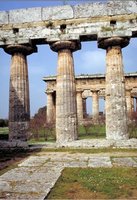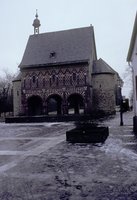 |
Table of Contents
QuickSelect: Make your selection by dropping down this menu. |
|
|
Chronological Path

|
If you choose to follow this path it will give you an overview of all 43 presentations comprising Architecture in the Classical Tradition, arranged chronologically. The segments range from the Bronze Age period in ancient Greece, that is to say around 1500 BC, right up to the present day. Within the presentations, however, I frequently give you the opportunity to jump forward or backward in time in order to understand the continuity of the classical tradition, and its ongoing relevance. For greater ease of comprehension I have divided the chronological path into four time periods: the Ancient World; the Middle Ages; Early Modern; and Modern Times. I suggest you consult this path first to get a view of the whole.
|
Thematic Path

|
Selecting this path will present you with presentations within Architecture in the Classical Tradition, arranged according to a number of overall thematic categories. In this way you are able to explore the links that interconnect time periods. The themes relate to such things as various types of buildings (from huts to palaces, temples to churches, libraries, museums and many more). Other themes trace the spread of architecture along a route — a path within a path so to speak. Or, you can investigate architecture's relationship to structure, places specially noted for their architecture, the development of individual buildings over the course of time, and so forth.
|
Theoretical Path

|
The last of the three paths allows you to investigate theoretical issues that lie at the very heart of understanding Architecture in the Classical Tradition. For example, this path groups select presentations in such a way as to emphasize the evolving definition of classicism: its origins; its design principles; and the nature of its architectural Orders. In addition, a cluster of segments stretching from the Renaissance to the present invites you to witness the emergence of the architectural profession with its rules, its regulations, and its methods of education. You may also choose to study the artistic development of key architects, or the importance of architectural drawings and illustrations in the design process.
|
|
|
|
|


